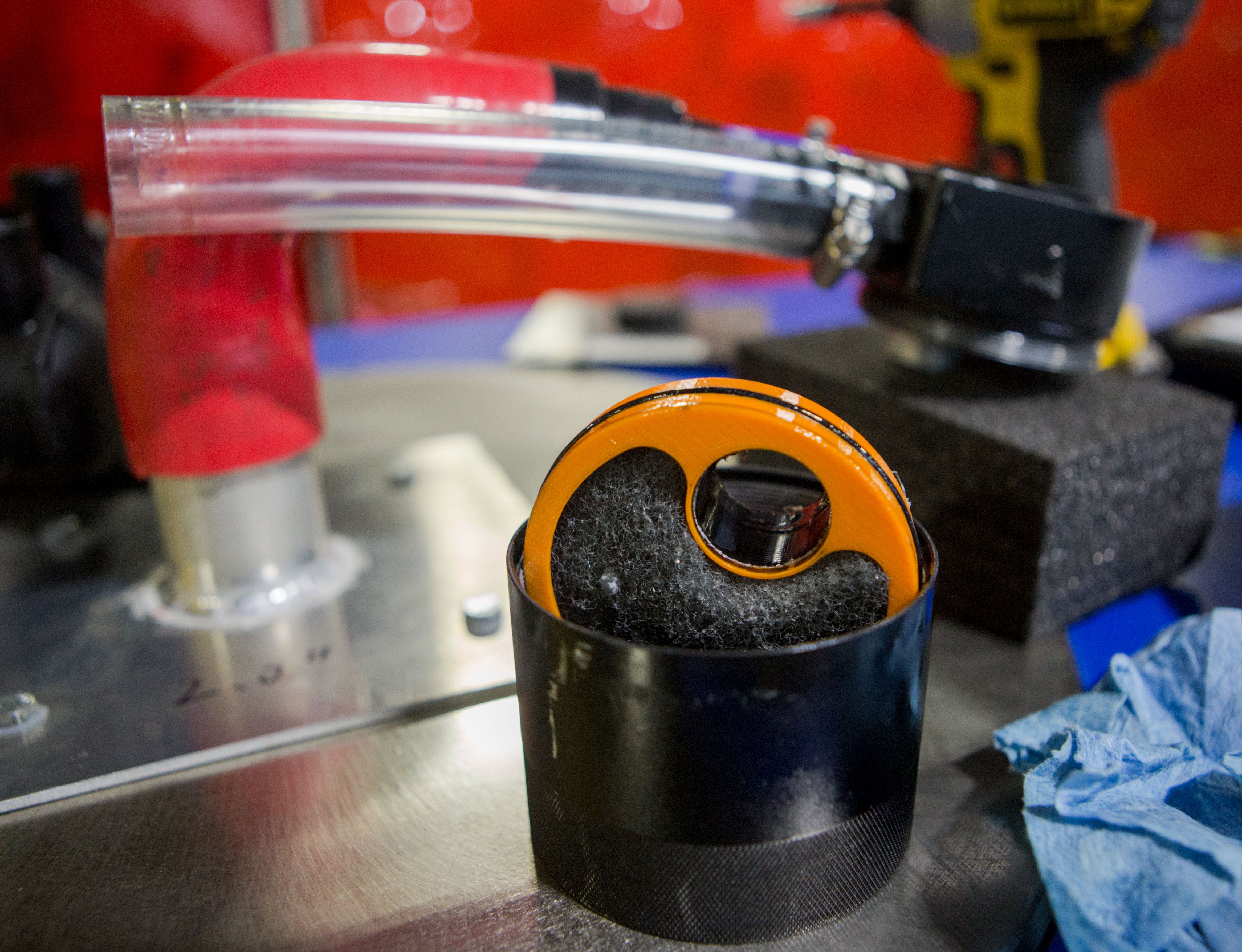
Universally Guarded - Universal High-Flow Catch Can R&D, Part 2: Universal No More
This 2003-2007 Ford 6.0L Direct-Fit Baffled Oil Catch Can Kit is now on pre-sale! Check it out here!
Even if you're good at it, science often takes a long time. It seems like every year we hear about a new scientific discovery that's going to change our lives forever. Within a few months' time, the wonder has faded, and the world has moved on to the next amazing discovery. But science marches on behind the scenes and those wonders live in the shadows until the spotlight is shined on them once again.
Mishimoto isn't immune to the often-sluggish pace of science, but we stick to the age-old adage that if you're going to do something, it's best to take your time and do it right. Better to toil in the shadows than be lazy in the light. After over a year of testing, adjusting, and going back to the drawing board a few times, we finally have a product that we're proud to sell.
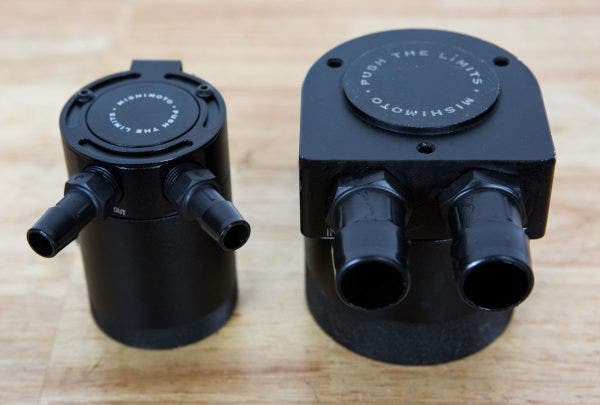
Back in June of last year, we showed you our initial design for a universal, high-flow, baffled oil catch can to suit diesel engines. Since then, we really haven't changed much in the external features of that catch can. We're still using massive, 1-inch diameter fittings and an equally large 5.3 ounce can (versus our compact 2 oz can that comes with most of our kits). We replaced the bronze filter and baffle plate with a high-flowing baffle and integrated filter, which you can see below. Since June, that baffle and filter have gone through a few evolutions.
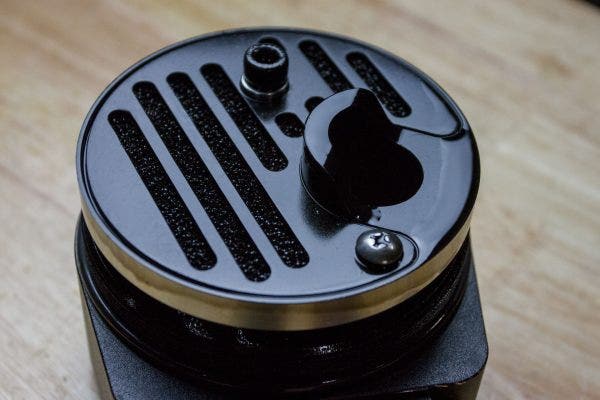
Our initial design for the high-flow baffle used a light plastic foam composite that we thought would be open enough to let blow-by through, but dense enough to give oil vapors a place to condense and collect. The foam was also rated to be resistant to the chemicals commonly found in blow-by. Testing the filter in new engine oil showed that the plastic foam was resistant to decay, and flow testing confirmed that it flowed well enough for high-volume engines. The true test would be leaving our R&D facility and getting some real-world mileage on the can.
Of course, testing on a vehicle meant mounting our can and routing lines. That's when our universal high-flow catch can kit became our direct-fit 2003-2007 Ford 6.0L Powerstroke catch can kit.
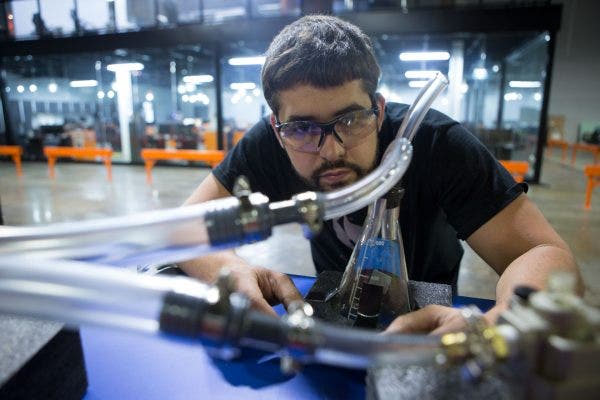
The first step in taking our high-flow catch can from universal to direct-fit is also the most important: develop a bracket and mount the can. Typically, this means finding a spot in the engine bay that makes servicing easy, so that's where we started. The project engineer developed a simple bracket that would locate the can in the upper right corner of the engine bay. An equally simple set of lines connected the catch can to the driver's side cylinder head and back into the turbo inlet to pull a vacuum on the can. Everything was secure and easy to access, so we sent our 6.0 out into the world to gather data for the next 1,000 miles.
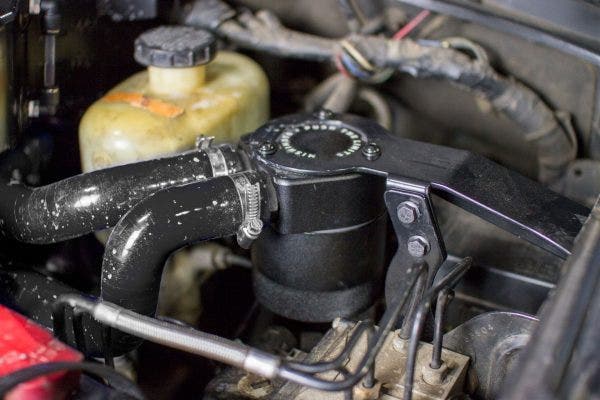
After the allotted mileage had been driven, we pulled our 6.0 into our R&D facility to check how much blow-by the can had collected. With the bottom of the can off, we could see that we had a couple issues.
First, there was very little blow-by collected in the can. A thorough inspection of the system led our engineers to the conclusion that the height of the can and slight rise of the hoses was forcing blow-by to fall back into the engine. To make matters worse, when we poured out the blow-by that was captured in the can, we found more than oil. Despite its chemical resistance ratings and our testing with new engine oil, the specific combination of heat, oil, fuel and water vapor proved to be too much for the plastic filter. But we weren't out of options yet. We didn't test just one filter material in our initial selection process; our second choice was a more open, but more robust plastic-foam filter. Our only worry with this material was that it would flow too well and not slow the vapors enough to condense, but only time would tell.
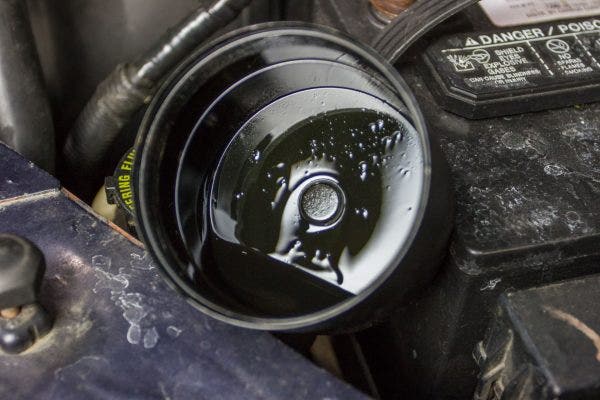
Addressing the drain-back issue would require significantly more work. The reason we chose the top-right of the engine bay for the catch can to live was that it's one of the only areas that the can was serviceable and where we could route lines. But, it wasn't functioning. No matter how good it looked or how easy it was to service, it needed to move. Thinking outside the engine bay led us to the next best option.
Many diesel vehicles have filters or other maintenance items along the frame rails. Taking inspiration from those components, we decided to mount the can just behind the driver's side front wheel well. This location is easy to reach without getting all the way under the truck and protected from most road debris; and best of all, being lower than the engine would make gravity work for us to push fluid down into the can. The project engineer started working on a bracket to mount our nearly 2.5lb catch can.
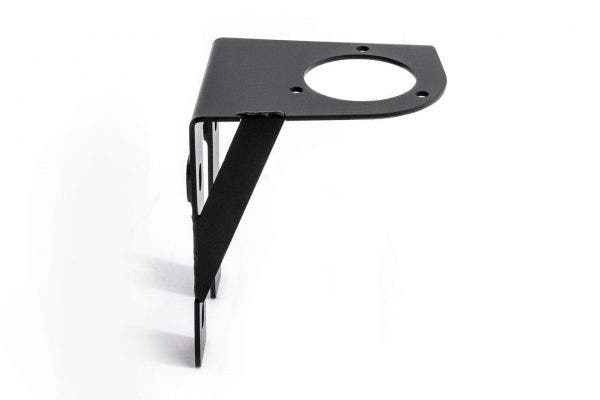
The simplest solution is often the best, and it doesn't get much simpler than this bracket. After a quick trip to the waterjet and then the welding table to add a gusset, our 3mm-thick steel bracket was ready for real-world testing. Four bolts securely mount the bracket to the driver's side step-mount where it can be easily drained and serviced. The bracket was simple, but the hoses were a more complicated task. Traveling from the engine bay to the catch can required several precise bends. The lines snake around the battery, down behind the fender liner, and straight back to the catch can. A few pieces of weather stripping protect the lines from sharp edges.
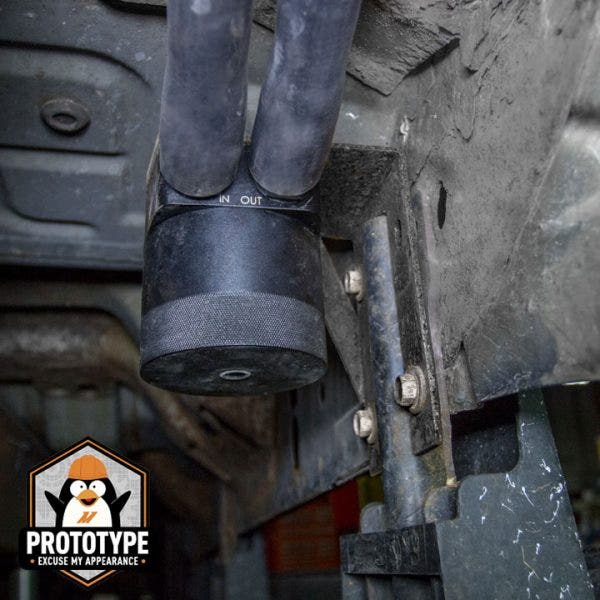
With our redesign complete, we repeated our road testing. Pulling the bottom of the can off after 1,000 miles revealed a fully intact filter and significantly more blow-by in the can than the previous testing. The return line was clean, and the truck ran smoke-free, so our drain-back problem had been solved by the lower can mount. After 3,000 miles, we checked again to make sure the bracket, can, and lines were holding strong against the harsh winter road conditions in northern Delaware. Salt and snow are no match for the 3mm-thick powder coated steel bracket and hard-anodized can. Emptying the catch can again revealed about 25 ml (0.84 fl. oz.) of condensed oil and fuel vapors.
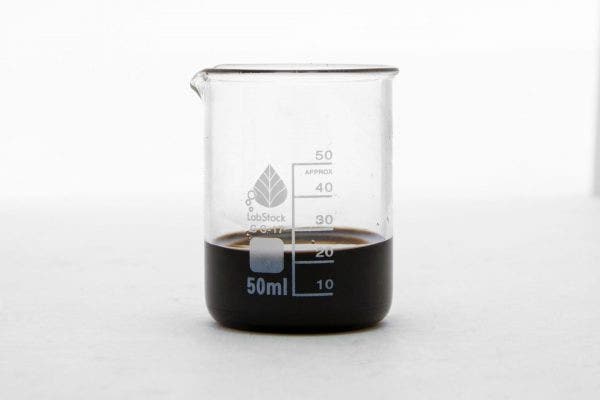
All of this brings us to today, the day we bring our direct-fit Ford 6.0L Powerstroke catch can kit out of the shadows and into the light. We took our time and did it right. Now, we can be proud to say that this kit is on pre-sale.
Thanks for reading and, as always, feel free to let us know what you think,
-Steve




